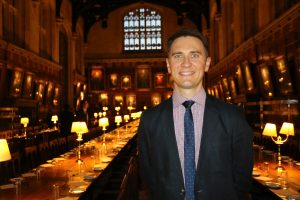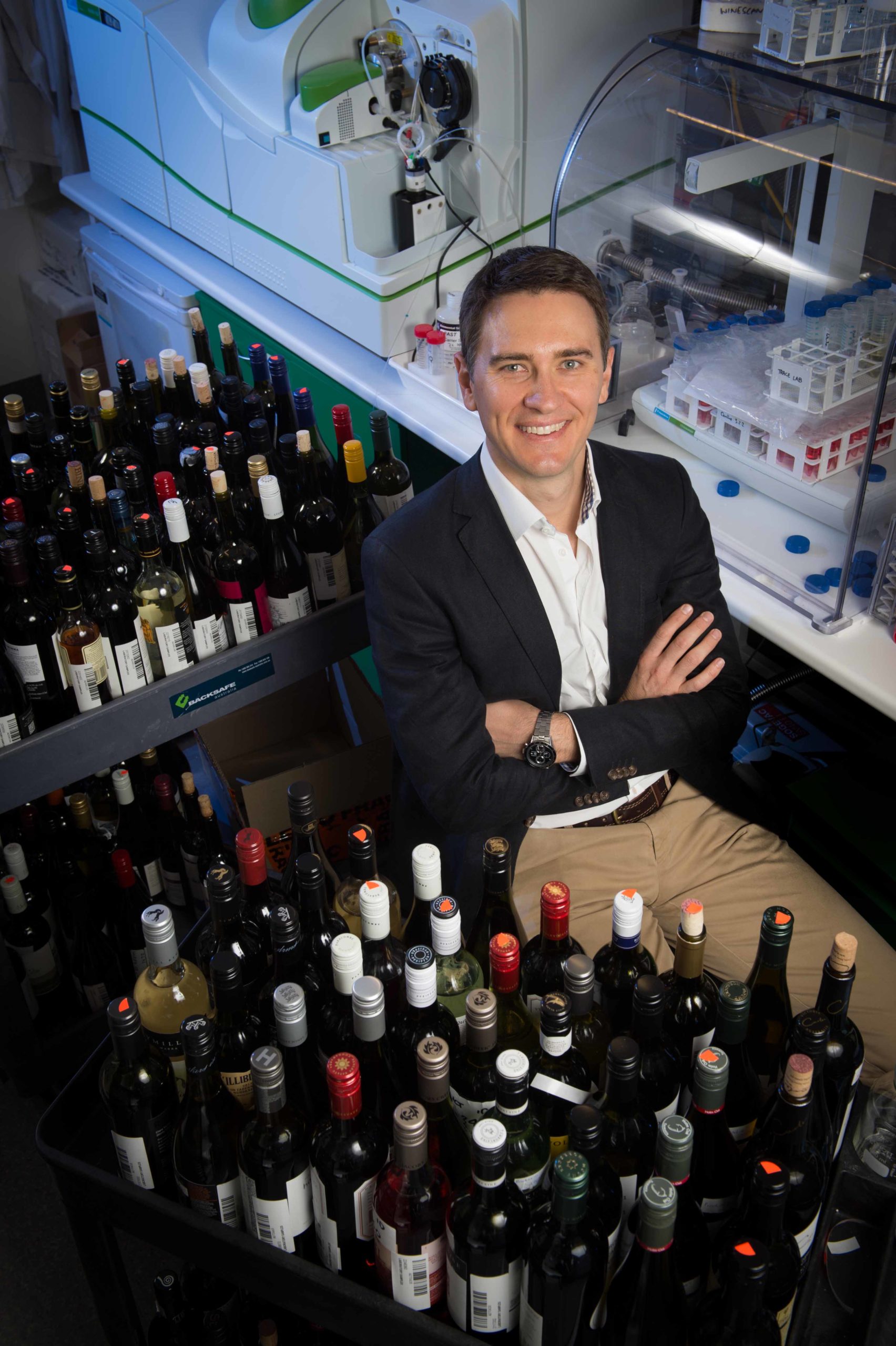Institution: Said Business School, University of Oxford (UK)
Course: Advanced Management & Leadership Program
Thanks to the generous support of the ILF and the Board of the Australian Wine Research Institute (AWRI) I undertook the flagship Advanced Management and Leadership Program at Oxford University’s Said Business School.
Not long prior to my arrival, Said Business School had been announced as the Financial Times’ 4th best business school in the world for open enrolment executive education, and the course reflected that ranking – high quality participants, great faculty and a fantastic overall program.
The on-site residential course was held in the heritage-listed Egrove Park facility just outside central Oxford, which was built at the height of the cold war with a lead shield on the perimeter to function, among other things, as a nuclear fallout shelter for the British Cabinet. It’s set in a large woodland area with walking trails, and resident deer, squirrels and rabbits.
Oxford is a university city, one steeped in history and a source of inspiration. Walking the streets of the city in the footsteps of some 27 Nobel Laureates and so many others who have shaped the last >800 years of human discovery and endeavour creates a desire to think big, act big and make a meaningful contribution to society.
The class of 42 (10 of whom were either born in or currently work in Australia) worked together over a 3-week program period. The achievements and societal contributions of others in the class (you learn as much from other participants as you do from presenters and the course content) also served as a source of inspiration to tackle big challenges.
The participants, from 17 nations, included a Major General in the Australian Army, a Squadron Commander in the Dutch Marine Corps, bankers, numerous CEOs of for-profit and not-for-profit companies, division heads of major companies and Government entities, and politicians. There was a diverse mix of backgrounds, social economic status and cultures.
The course was characterised by a lot of contact hours – social and fitness activities commenced in the early morning and course content, presentations, case studies, readings and networking lasted deep into every evening. There were days when I got to bed thinking “my heads hurts”. Compared to some other business school experiences I found the OAMLP to favour substance over style, with a high degree of intellectual rigour and a measured, critical approach to ideas and issues.
There were so many learnings, many of which are reflected in a personal action plan developed with an assigned personal coach.
- An update on contemporary leadership principles and actions. Having done an MBA in the 2000s, I was struck by the increased emphasis now given to societal/community considerations in effective leadership – how the trust nexus between business, government and society is critical and yet so often the focus in business is on one or two of these dimensions. Themes of awareness, engagement, social responsibility, values, humanity and humility are increasingly part of the corporate narrative, and businesses are increasingly catalysts of social change and the interests of society at large. Purpose coexists with profit in many of the world’s top companies.
- Reflecting on the notion that the illiterates of the 21st century are those who cannot learn, unlearn and relearn – and that the leadership principles which have worked to date are unlikely to be the same as those needed for organisational success over the next decade and beyond. Much was made of the ongoing shift away from ‘heroic leaders’ and ‘command and control’ leadership trend towards collaborative, distributed leadership.
- Consideration of global megatrends like the rise of consumer activism, disruption and the pace of change, artificial intelligence, and value chain/systems thinking and how to capitalise upon them. A significant proportion of jobs now in existence will be redundant in 20 years, and the pace of change and competition is only increasing. The half-life of knowledge is as little as 10 years in many fields and, in some subjects such as strategy formulation and execution, there is a real need to ‘unlearn’ much of the information and frameworks of the past and ‘relearn’ and ‘reframe’ to align with the demands of modern business. This means that for many issues in modern business there is no perfect, long-lasting solution, just lots of solid options. The art of leadership is teasing out which option to implement and ensuring that innovation is part of the organisational culture – the only sustainable competitive advantage is the ability to generate a continuous flow of competitive advantages and continuous innovation experiments. It also means that leadership is more diffuse and distributed than the past, and that organisations need to design and implement strategy drawing on all the assets of their value chain.
- The long-term leadership framework evolution of intelligence (IQ) to emotional intelligence (EQ) to spiritual intelligence (SQ), where SQ refers to the resilience needed to maintain a purpose- and value-driven leadership direction in the face of the pace of change in modern business.
- The relationship between the different fundamental levers of performance – the elements that underpin impressive performance are not in themselves impressive – doing simple things very well is in most cases better than seeking a blockbuster ‘competitive advantage’ if it creates scope for ‘unforced errors’ in the core parts of the business. The poetry must coexist with the plumbing. Find satisfaction in doing the simple things well.
- A detailed consideration of change management and the mechanisms to achieve it successfully – this involves finding the right combination of incentives, coercion, participation and education to suit the circumstances.
- Challenging the notion of ‘the complete leader’. No individual is strong in all the qualities necessary to lead and manage an organisation. A ‘perfect team’ is, however, achievable if the leader is willing to invite and accept feedback (through a model such as the primary colours model which outlines a leader’s profile on the dimensions of strategy, operations and interpersonal relationships), focus on their strengths and builds a team to complement the gaps.
- Useful reminders on the fundamental principles of financing, budgeting, marketing and negotiation through case studies of high profile successes and failures in recent years.
- The personal coaching/tutoring sessions focussed on personal and professional development. This includes the insights gained from psychometric and 360 profiles – it’s like having ‘professional therapy’ and so useful and necessary.
- Deep reflection on my own personal leadership journey and the critical factors involved, and how to ensure that similar opportunities are afforded to the next generation of leaders.
- The inspiration and motivation that comes with spending time away from day to day business with some extraordinary people and achievers and forming networks and friendships.
- Hundreds of inspirational quotes and stories.
Each participant produced a specific, confidential action plan with initiatives under the headings self-development, work/team productivity, impact and making a difference in society.
My actions related to some subtle shifts in my leadership and management style, actions to improve my organisation’s culture and productivity, actions to focus on the key sources of stress in my work/life mix, and the introduction of several new (to me) models and tools into organisational strategy and talent management. I will also prepare a list of the phrases and notions which have inspired me on the course and have a copy near my desk for constant reference.
I’m returning to work energised and full of ideas to implement to improve the fortunes of the State of South Australia, my industry and my organisation.
I am very grateful to the Industry Leaders Fund and the AWRI Board for making this opportunity possible.


